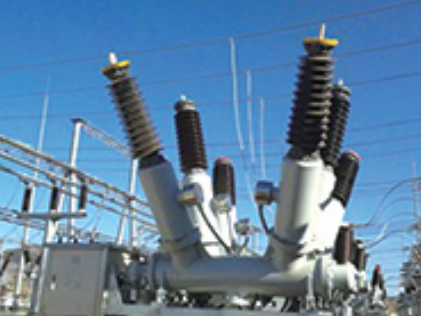Transformers play a critical role in electrical power systems by adjusting voltage levels to meet the demands of transmission and distribution. One important technical parameter that directly affects transformer performance and safety is the permissible current—the maximum amount of current a transformer can safely handle without overheating or sustaining damage. Understanding permissible current is vital for selecting the right transformer, ensuring operational stability, and preventing costly failures. This article will explain what permissible current means for transformers, the factors influencing it, and how it impacts transformer design and application.
What Is Permissible Current in Transformers?
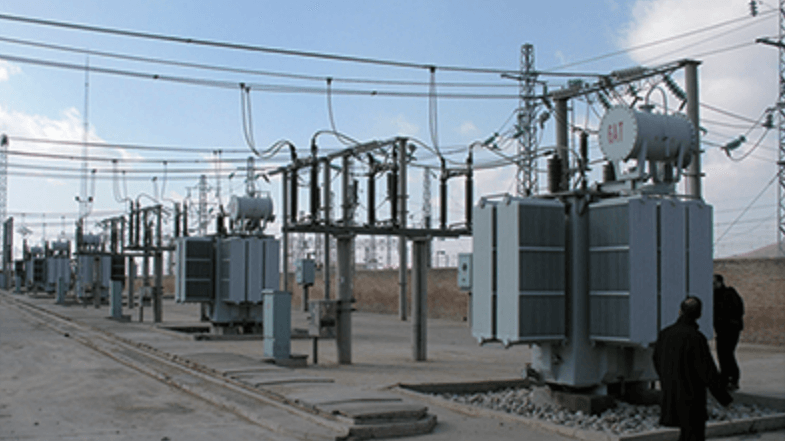
Understanding the concept of permissible current in transformers is fundamental for ensuring their safe, efficient, and long-term operation. Permissible current refers to the maximum current that a transformer can safely carry under normal or specified conditions without causing excessive temperature rise, damage to insulation, or premature aging. Operating a transformer within its permissible current limits is crucial for maintaining performance, efficiency, and reliability while avoiding costly failures.
In this article, we will explain what permissible current means in the context of transformers, how it is determined, and why adhering to these limits is vital for system health and safety.
Definition of Permissible Current
Permissible current in transformers is the highest continuous or short-term electrical current that the transformer’s windings can carry without exceeding the maximum allowable temperature of the insulation system and causing thermal or mechanical degradation.
- Continuous Permissible Current: The normal current the transformer is rated to handle 24/7, typically specified on the transformer’s nameplate (often referred to as rated current).
- Temporary Overcurrent (Permissible Overload): Short periods where the transformer can carry currents above its rated value without significant risk, provided it stays within defined thermal and time limits.
This permissible range ensures that heating effects due to current (I²R losses) do not deteriorate the winding insulation or other internal components, safeguarding the transformer's operational life.
Key Factors Determining Permissible Current
The permissible current rating of a transformer depends on several important design and operational factors:
| Factor | Impact on Permissible Current |
|---|---|
| Winding Material (Copper or Aluminum) | Copper has lower resistance, allowing higher permissible currents. |
| Insulation Class | Higher insulation classes (e.g., Class F or H) withstand higher temperatures. |
| Cooling Method | Enhanced cooling (like oil circulation or forced air) increases current capacity. |
| Ambient Temperature | Higher environmental temperatures reduce permissible current limits. |
| Duty Cycle and Load Profile | Intermittent loads may allow higher temporary permissible currents. |
The transformer's design must balance these factors to ensure that, even under maximum load, internal temperatures remain within safe operational limits.
Permissible Current vs. Rated Current
It's crucial to distinguish between rated current and permissible current:
- Rated Current: The current a transformer is designed to carry continuously under nominal voltage and frequency conditions.
- Permissible Current: While it often equals the rated current for steady operations, it can be higher for short periods if the transformer design and cooling system allow temporary overloads without damaging the insulation or core.
For example, standards like IEC 60076-7 and IEEE C57.91 allow transformers to operate above rated current for limited times, with permissible overcurrent curves defining safe limits based on ambient conditions and prior loading history.
Standard Guidelines and Thermal Limits
Transformers must comply with internationally recognized standards that define permissible current and related thermal limitations:
- IEC 60076-2: Specifies permissible temperature rises for oil-immersed and dry-type transformers under rated current.
- IEEE C57.91 (Loading Guide for Mineral-Oil-Immersed Transformers): Provides guidelines for transformer loading beyond rated current based on allowable hot-spot temperature rises.
Typical permissible temperature rises associated with rated current are:
| Transformer Type | Maximum Average Winding Temperature Rise (°C) |
|---|---|
| Oil-Immersed Transformer | 55 °C or 65 °C (above ambient temperature) |
| Dry-Type Transformer | 80 °C, 115 °C, or higher based on insulation class |
Higher currents are permissible as long as the resulting temperature stays within these limits for the specified duration.
Examples of Permissible Overload (Short-Term Conditions)
Under certain conditions, transformers are allowed to carry more than their rated current for short periods, depending on the system's demand and the transformer's thermal response. Example guidelines include:
- 110% of rated current for a few hours per day under controlled conditions.
- 150% of rated current for emergency operations lasting 15–30 minutes, with mandatory cooldown periods afterward.
- Overload permissible only if transformer temperatures (hot-spot and top-oil) remain within allowable limits.
Each transformer has specific overload curves indicating how much overcurrent is permissible based on time and temperature factors.
Impact of Exceeding Permissible Current
Exceeding the permissible current for prolonged periods can lead to severe consequences:
- Accelerated Insulation Aging: High temperatures double the insulation aging rate for every 6–8 °C above design limits.
- Oil Degradation: In oil-filled transformers, excessive heat breaks down the insulating oil, leading to sludging and loss of dielectric strength.
- Mechanical Stresses: Higher currents cause stronger electromagnetic forces, which can physically damage windings during short circuits or faults.
- Increased Risk of Fire or Explosion: Overheating and insulation failure can lead to catastrophic transformer failures.
Thus, respecting permissible current ratings is critical for both reliability and safety.
Monitoring and Managing Transformer Currents
Modern power systems use advanced technologies to monitor transformer loading in real-time and manage currents to stay within permissible limits:
- Load Tap Changers (LTCs): Adjust voltage to maintain optimal load current distribution.
- Online Dissolved Gas Analysis (DGA): Detects gas buildup indicating overheating due to overloading.
- Thermal Sensors and Alarms: Monitor winding and oil temperatures to trigger alarms if overheating occurs.
- Smart Transformer Management Systems: Use predictive analytics to optimize loading and extend service life.
Using these tools ensures transformer operation remains within safe permissible current ranges, preventing unexpected failures.
How Is the Permissible Current Value Determined for a Transformer?
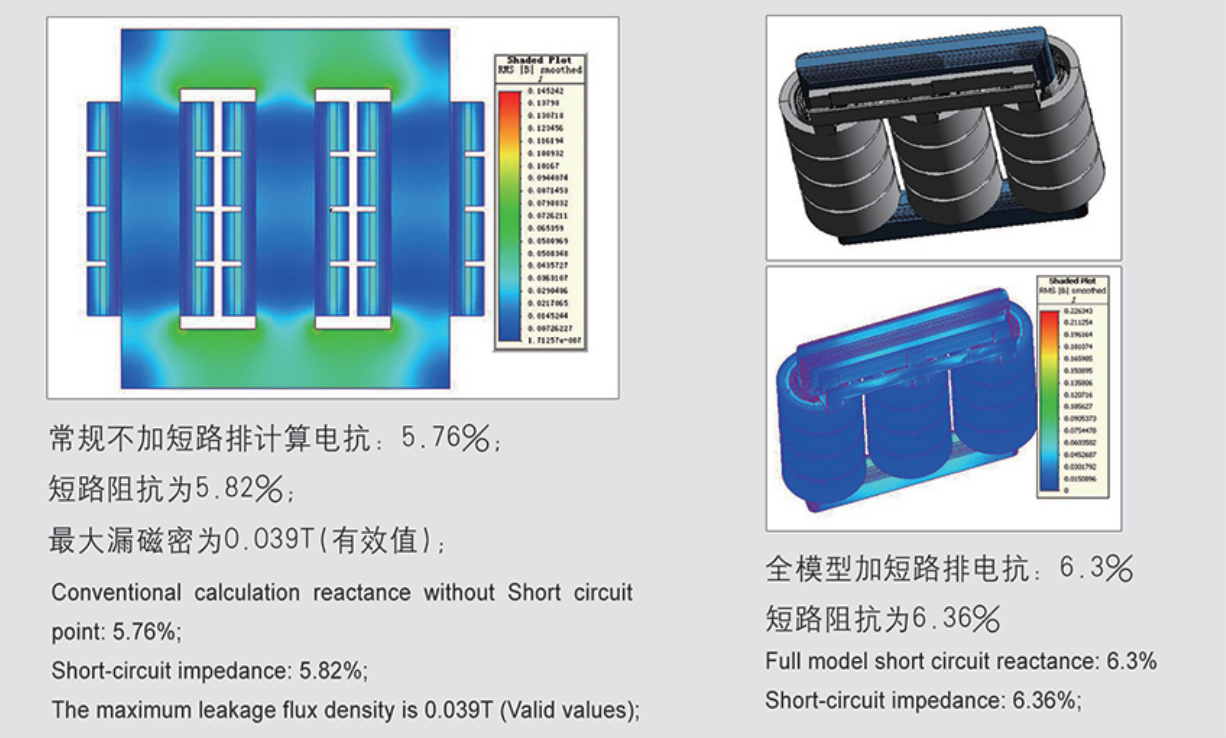
The permissible current value in a transformer is a carefully calculated limit that ensures the transformer can operate safely and efficiently without suffering from thermal overload, insulation degradation, or mechanical stress. Determining this value requires consideration of multiple engineering factors, including electrical design, thermal capacity, environmental conditions, and international standards.
In this article, we will comprehensively explain how the permissible current value is determined for a transformer, detailing the steps, influencing factors, and standard calculation practices used by transformer designers and engineers.
1. Base Calculation from Transformer Rating
At the core, the permissible current is directly related to the transformer's rated power (kVA or MVA) and rated voltage. The basic formula used is:
[\text{Rated Current (I)} = \frac{\text{Rated Power (S)}}{\sqrt{3} \times \text{Rated Voltage (V)}}]
Where:
- S = apparent power in VA (Volt-Amperes)
- V = voltage in Volts (line-to-line for three-phase)
- I = current in Amperes (A)
This rated current typically forms the baseline permissible current for continuous operation under standard conditions (ambient temperature, frequency, and cooling systems).
2. Adjustment Based on Cooling Methods
The cooling method significantly impacts how much current the transformer can handle safely:
| Cooling Type | Effect on Permissible Current |
|---|---|
| ONAN (Oil Natural Air Natural) | Standard permissible current based on natural cooling. |
| ONAF (Oil Natural Air Forced) | Higher permissible current due to forced air cooling. |
| OFAF (Oil Forced Air Forced) | Even greater permissible current due to active oil and air circulation. |
| Dry-Type (Air Cooled) | Typically lower permissible current due to limited cooling capacity. |
Cooling systems remove heat generated by the current-carrying windings. If the system can dissipate heat more effectively, higher permissible currents can be tolerated without exceeding temperature rise limits.
3. Insulation Class and Temperature Rise Limits
Insulation material defines the maximum temperature a transformer can withstand without damage. Permissible current is calculated to ensure that the internal temperatures do not exceed the allowable limits based on insulation class:
| Insulation Class | Maximum Hot-Spot Temperature (°C) |
|---|---|
| Class A | 105 °C |
| Class B | 130 °C |
| Class F | 155 °C |
| Class H | 180 °C |
- Temperature rise limits are often 55 °C or 65 °C above ambient for oil-immersed transformers.
- For dry-type transformers, temperature rises can be 80 °C, 100 °C, or even 115 °C depending on the insulation system.
Permissible current is calculated to ensure that under full load, the winding and oil temperatures stay within these thermal constraints.
4. Ambient Temperature Considerations
Standards assume a reference ambient temperature (typically 20–30 °C). If the actual installation environment has a significantly higher ambient temperature:
- The permissible current must be derated to prevent overheating.
- Conversely, in cooler climates, permissible current may be slightly increased with proper thermal management.
Typical correction factors apply based on deviations from standard ambient temperatures.
5. Duty Cycle and Load Profile
Transformers operating under variable load conditions may have different permissible current values:
- Continuous Loads: Permissible current aligns with rated current without exceeding temperature limits.
- Cyclic or Intermittent Loads: Short-term overloads above rated current are permissible if followed by cooling-off periods, according to standards like IEC 60076-7 or IEEE C57.91.
The load profile affects thermal aging, so transformer designers use thermal modeling to determine safe overload permissible currents based on expected usage patterns.
6. Short-Term Overcurrent Ratings
Many transformers allow for short-term overcurrents based on thermal inertia:
| Overload Duration | Permissible Current |
|---|---|
| 30 minutes | 125–135% of rated current |
| 2 hours | 110–120% of rated current |
| 24 hours | 105% of rated current |
These values assume that after the overload period, the transformer will return to normal or below-normal loading to cool down properly.
Overload capability depends on previous loading, oil/insulation condition, and cooling efficiency.
7. Compliance with International Standards
Standard guidelines provide methodologies to determine permissible currents accurately:
- IEC 60076-1: Specifies rating principles and permissible temperature rises.
- IEC 60076-2: Deals with thermal performance and permissible overload conditions.
- IEEE C57.91: Provides detailed load capability curves for mineral-oil-immersed transformers based on ambient temperature and load history.
- CIGRÉ Guidelines: Offer additional insights for extreme environments and custom applications.
Engineers must reference these standards to ensure legal compliance, thermal safety, and long transformer life.
8. Real-World Calculation Example
Suppose you have a transformer rated at 5 MVA, 11 kV (three-phase, 50 Hz). Let’s calculate the permissible continuous rated current:
[\text{I} = \frac{5,000,000}{\sqrt{3} \times 11,000}]
[\text{I} ≈ 262 \text{ Amperes}]
Thus, under standard conditions (ambient 30 °C, ONAN cooling, Class A insulation), the continuous permissible current is about 262 A.
- With ONAF cooling available, the permissible current might increase by 25–30% without exceeding the safe temperature rise.
- Short-term emergency loading could temporarily push current up to ~340 A for about 30 minutes, if the thermal conditions allow.
Always verify against the manufacturer's specifications and loading guidelines for precise permissible current adjustments.
What Happens If a Transformer Exceeds Its Permissible Current?
A transformer's permissible current is carefully calculated to ensure it can operate safely without suffering from thermal, mechanical, or electrical damage. However, if the transformer is forced to operate beyond this limit, either due to a system fault, poor planning, or unexpected load surges, it can suffer serious consequences. Exceeding the permissible current for even short periods can initiate a chain reaction of failures, leading to equipment damage, system instability, and expensive downtime.
In this article, we’ll explore what happens when a transformer exceeds its permissible current, detailing the immediate effects, long-term damage mechanisms, and associated risks to the electrical system.
1. Overheating and Insulation Degradation
The most immediate and serious effect of exceeding permissible current is excessive heating within the transformer windings and core.
- I²R Losses: The power loss (heat generated) inside the windings increases with the square of the current. A 10% overcurrent causes about a 21% increase in heat generation.
- Insulation Damage: The insulating materials surrounding the windings are rated for specific maximum temperatures (based on their class: A, B, F, H). When those temperatures are exceeded:
- Thermal aging accelerates: Each 6–8 °C increase above rated temperature can halve the insulation lifespan.
- Dielectric strength weakens, making electrical breakdowns and short-circuits more likely.
- Permanent chemical changes in materials occur, leading to embrittlement or charring.
Over time, even modest but repeated overloads can severely shorten the transformer's operational life.
2. Core Saturation and Harmonic Distortion
If a transformer operates under extreme overcurrent, its magnetic core can become saturated:
- Saturation happens when the magnetic flux exceeds the core's capability to magnetically align.
- Consequences:
- A sharp rise in magnetizing current.
- Increased production of harmonics (non-sinusoidal currents) that stress other electrical equipment.
- Higher losses, leading to additional overheating.
- Potential misoperation of protection devices sensitive to current waveforms.
Saturation significantly deteriorates the power quality and can cause unstable system behavior.
3. Mechanical Stress on Windings
High currents generate stronger electromagnetic forces inside the transformer windings.
- Radial forces can push windings outward or inward.
- Axial forces can cause windings to compress or shift vertically.
- Vibration and movement can cause:
- Insulation abrasion.
- Winding deformation.
- Mechanical displacement, leading to internal short-circuits.
These mechanical damages often result in catastrophic failures, such as internal arcing, partial discharges, and complete winding burnout.
4. Oil Degradation in Oil-Immersed Transformers
In oil-filled transformers, exceeding the permissible current can lead to rapid deterioration of the insulating oil:
- Increased temperature causes oil to break down chemically, producing gas bubbles, acids, and sludge.
- Gas formation (e.g., hydrogen, methane, acetylene) inside the oil is an indicator of thermal faults or arcing.
- Sludge buildup reduces cooling efficiency and blocks circulation paths, further exacerbating overheating.
Dissolved Gas Analysis (DGA) often detects early signs of oil degradation after overcurrent events.
5. Increased Risk of Fire and Explosion
Severe overheating and mechanical stress can culminate in fire or explosion hazards:
- Insulation failure can lead to arcing faults inside the transformer.
- Arc flashes generate extremely high temperatures (up to 20,000 °C), igniting oil vapors or insulating materials.
- Tank rupture or pressure relief valve activation may occur in oil-filled units under extreme pressure buildup.
Transformer fires not only destroy equipment but also pose serious risks to nearby assets, infrastructure, and personnel.
6. Activation of Protection Systems
If designed properly, the electrical system's protection relays will detect the overcurrent condition and respond:
- Overcurrent Relays: Trip circuit breakers to isolate the transformer from the system.
- Buchholz Relays (for oil-filled transformers): Detect gas generation from internal faults and initiate alarms or tripping.
- Temperature Alarms: Thermal sensors trip the transformer offline if excessive winding or oil temperatures are detected.
If protection fails or is improperly set, prolonged overload can cause irreversible damage before shutdown.
7. Long-Term Effects and Hidden Damage
Even if the transformer survives an overcurrent event without immediate failure, long-term effects are inevitable:
- Reduced lifespan: Insulation damage accumulates, reducing future reliability.
- Increased maintenance costs: Additional inspections, oil testing, and possible refurbishment become necessary.
- Hidden failures: Minor insulation breaches or minor mechanical shifts may not cause immediate problems but can lead to eventual catastrophic failures months or years later.
Thus, every significant overcurrent event should trigger comprehensive inspections and diagnostics.
Real-World Example Table
| Parameter | Normal Operation | Exceeded Permissible Current |
|---|---|---|
| Winding Temperature Rise | 55–65 °C | >100 °C |
| Insulation Life Expectancy | 20–30 years | Reduced by 50% or more |
| Core Behavior | Linear | Saturated, harmonic distortion |
| Mechanical Integrity | Stable | Potential deformation, risk of shorts |
| Protection Status | Inactive | Tripped/alarmed |
ClaimReview Fact Check
Exceeding a transformer's permissible current accelerates insulation aging and increases the risk of catastrophic failure.True
Excessive current causes overheating, mechanical stress, and chemical degradation of insulation and oil, all of which contribute to shortened transformer life and increased failure risk.
How Does Temperature Influence the Permissible Current of a Transformer?
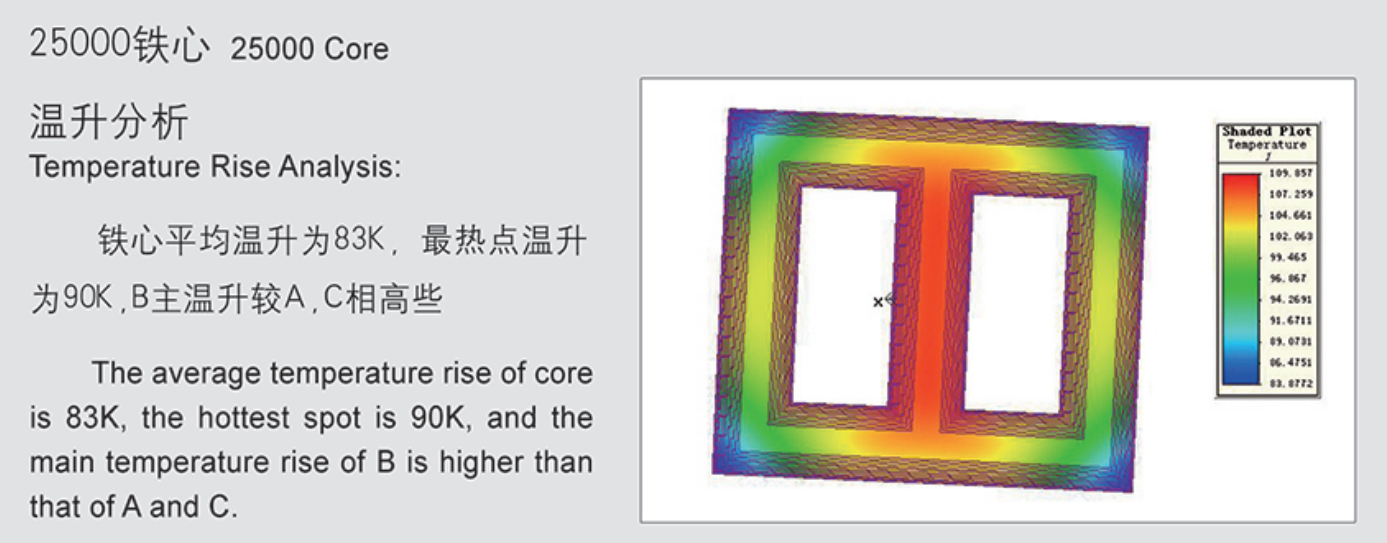
Temperature is a critical factor in determining the permissible current a transformer can safely handle. The ability of a transformer to carry electrical load without damage is heavily dependent on its internal temperature, which is influenced by both the ambient temperature and the heat generated by electrical losses. Exceeding thermal limits can cause insulation failure, accelerated aging, and permanent damage to the transformer's internal components. Thus, understanding the relationship between temperature and permissible current is essential for the safe, efficient, and long-term operation of transformers.
In this article, we explore in depth how temperature influences the permissible current of a transformer, including practical considerations, standards, and corrective measures.
1. Heat Generation in Transformers
As current flows through a transformer, it generates heat mainly due to:
- Copper Losses (I²R losses): Proportional to the square of the current. Higher current leads to significantly greater heating.
- Core Losses (Hysteresis and Eddy Currents): Relatively constant but contribute to baseline heating.
- Stray Losses: Caused by leakage flux, adding localized heating within the transformer structure.
When current increases, I²R losses rise sharply, making it more difficult for the transformer to dissipate heat effectively.
2. Ambient Temperature Effects
Ambient temperature—the temperature of the environment surrounding the transformer—directly affects its ability to cool itself.
- Standard Assumptions: Most transformers are rated assuming a reference ambient temperature of:
- 20 °C for dry-type transformers (IEC standard)
- 30 °C for oil-immersed transformers (IEEE standard)
- Higher Ambient Temperatures:
- Reduce the transformer's ability to dissipate heat.
- Decrease the permissible current to avoid overheating.
- Lower Ambient Temperatures:
- Improve heat dissipation.
- Potentially allow slight increases in permissible current under controlled conditions.
Typical Correction Factors
| Ambient Temperature | Correction Factor for Rated Current |
|---|---|
| 20 °C | 1.05 |
| 30 °C (standard) | 1.00 |
| 40 °C | 0.95 |
| 50 °C | 0.90 |
Note: Correction factors are approximate and may vary slightly depending on transformer design.
Thus, when ambient temperature rises by 10–20 °C above nominal, the transformer’s safe permissible current must be derated to prevent overheating.
3. Insulation Material and Thermal Limits
The internal insulation system defines the maximum allowable temperature for a transformer:
| Insulation Class | Maximum Hot-Spot Temperature (°C) |
|---|---|
| Class A | 105 °C |
| Class B | 130 °C |
| Class F | 155 °C |
| Class H | 180 °C |
- As the winding temperature approaches the insulation’s thermal limit, insulation aging accelerates exponentially.
- Each 6–8 °C rise above the designed hot-spot temperature can halve the insulation life.
If the operating temperature is too high because of elevated current or poor cooling, the permissible current must be reduced accordingly to maintain safe operating conditions.
4. Cooling Systems and Their Impact
Cooling methods significantly influence the relationship between current and temperature:
| Cooling Method | Effect on Permissible Current |
|---|---|
| ONAN (Oil Natural Air Natural) | Baseline permissible current, dependent on natural cooling efficiency. |
| ONAF (Oil Natural Air Forced) | 25–30% higher permissible current due to enhanced air circulation. |
| OFAF (Oil Forced Air Forced) | 40–50% higher permissible current with active oil and air cooling. |
| Dry-Type (Air Cooled) | Lower permissible current compared to oil-filled designs. |
By improving cooling, transformers can safely operate at higher currents without exceeding temperature limits.
5. Temperature Rise and Loading
Loading guides like IEEE C57.91 and IEC 60076-7 provide standard models for how temperature rise relates to loading:
- Normal Load: Designed to cause a specific temperature rise (e.g., 55 °C above 30 °C ambient for oil-immersed transformers).
- Overload Conditions:
- Allow temporary increases in current (typically up to 110–150%) if resulting temperatures do not exceed maximum safe limits.
- Require cooldown periods afterward to prevent cumulative thermal damage.
Temperature monitoring is crucial when transformers are loaded near or above rated conditions to ensure they stay within permissible thermal boundaries.
6. Real-World Example
Suppose a 1,000 kVA oil-immersed transformer is rated for 1,732 A at 400 V under a 30 °C ambient condition. If the ambient temperature rises to 45 °C:
- Using a correction factor of 0.90 (for 45–50 °C), the permissible current becomes:
[1,732 \times 0.90 = 1,559 \text{ A}]
Thus, permissible current must be reduced by about 10% to avoid exceeding thermal limits.
ClaimReview Fact Check
Ambient temperature increases lead to a decrease in a transformer's permissible current.True
Higher ambient temperatures impair heat dissipation, forcing the permissible current to be reduced to prevent overheating and insulation damage.
7. Long-Term Effects of Operating Beyond Temperature Limits
If a transformer operates continuously beyond its permissible temperature:
- Accelerated insulation aging: Life expectancy drops significantly.
- Oil degradation: In oil-filled transformers, overheated oil loses dielectric strength and forms sludge.
- Structural weakening: Prolonged heat exposure deforms windings and core materials.
- Increased failure risk: Hot-spot temperatures above limits can lead to sudden catastrophic failures.
Maintaining appropriate current levels based on actual ambient conditions is vital for transformer longevity and system reliability.
How Are Standards and Safety Codes Applied to Define Permissible Current?
The permissible current of a transformer isn't an arbitrary figure; it is carefully defined through international standards and safety codes designed to ensure safe operation, longevity, and reliability. These frameworks establish consistent rules for calculating and applying current limits based on thermal performance, insulation classes, cooling methods, and environmental conditions.
In this article, we explain how standards and safety codes are applied to define a transformer's permissible current, ensuring that manufacturers, engineers, and utilities align with globally accepted best practices for safety and performance.
1. The Role of International Standards in Defining Permissible Current
International standards provide uniform methods to determine the safe current-carrying capabilities of transformers under standard conditions:
| Standard | Focus Area |
|---|---|
| IEC 60076-1 | General requirements and rating principles for power transformers. |
| IEC 60076-2 | Temperature rise and thermal performance limits. |
| IEC 60076-7 | Loading guide for oil-immersed transformers under variable load conditions. |
| IEEE C57.12.00 | Standard for liquid-immersed distribution transformers. |
| IEEE C57.91 | Loading guide for mineral-oil-immersed transformers. |
| ANSI/IEEE C57.12.01 | Standard for dry-type transformers. |
| National Electrical Code (NEC) | Safety requirements for installation and maintenance. |
These standards define how to calculate permissible current considering transformer design, insulation, temperature rise, and operational conditions.
2. Key Standard Requirements That Influence Permissible Current
Rated Current Calculation
Transformers are designed with a rated current derived from their rated power and rated voltage, using formulas standardized across IEC and IEEE:
[\text{Rated Current} = \frac{\text{Rated Power (VA)}}{\sqrt{3} \times \text{Rated Voltage (V)}}]
This baseline current assumes standard operating temperatures and nominal cooling conditions.
Temperature Rise Limits
Standards specify maximum permissible winding temperature rise above ambient temperature:
| Transformer Type | Max Winding Temp Rise (°C) |
|---|---|
| Oil-Immersed (ONAN) | 55 or 65 °C |
| Dry-Type (Ventilated) | 80, 115, or 150 °C, depending on insulation |
These temperature limits guide how much current a transformer can carry continuously without damaging its insulation.
Ambient Temperature Assumptions
Standards assume typical ambient conditions:
- 30 °C average ambient for oil-immersed transformers (IEEE/IEC).
- 20–25 °C for dry-type transformers.
If actual ambient temperatures differ, standards provide correction factors to adjust permissible current downward or upward.
3. Safety Codes and Their Influence
Safety codes like the NEC (National Electrical Code) integrate transformer current ratings into broader system safety designs:
- Minimum Conductor Sizing: Ensures connected cables can safely carry transformer currents.
- Protection Devices: Specifies overcurrent protection (breakers, fuses) based on rated and permissible transformer currents.
- Clearances and Installation Practices: Dictates how transformers should be installed to dissipate heat effectively and ensure personnel safety.
By mandating installation and protection measures, safety codes ensure that permissible currents do not lead to unsafe overheating or system faults.
4. Derating and Overload Allowances According to Standards
Standards recognize that transformers may sometimes operate beyond rated current under controlled conditions. They define short-term permissible overloads based on:
- Pre-load thermal condition: How loaded the transformer was before the overload event.
- Ambient temperature: Higher temperatures reduce overload capacity.
- Cooling class: Transformers with better cooling (like ONAF or OFAF) tolerate more overcurrent.
Typical overload examples according to IEEE C57.91:
| Duration | Permissible Overload (%) |
|---|---|
| 30 minutes | 150% |
| 2 hours | 120% |
| 24 hours | 110% |
However, standards also emphasize that repeated or prolonged overloading accelerates thermal aging and must be factored into transformer lifecycle management.
5. Examples of Application of Standards
| Scenario | Standards Application |
|---|---|
| Designing a new oil-immersed transformer | Use IEC 60076-1 to set rated current based on design parameters. |
| Installing a transformer in a hot climate | Apply ambient temperature correction factors per IEEE C57.91 or IEC 60076-7. |
| Loading transformer during peak demands | Follow overload curves and thermal models from IEEE C57.91. |
| Setting protective relays and breakers | Size protection devices per NEC to prevent exceeding rated permissible currents. |
Through these applications, permissible current limits are consistently managed across the transformer’s design, installation, and operational phases.
ClaimReview Fact Check
International standards like IEC 60076 and IEEE C57.91 are used to define the permissible current of transformers.True
These standards establish rated current calculations, permissible overloads, temperature rise limits, and derating factors essential for transformer safe operation.
6. Monitoring Compliance in Real Operations
Modern transformers are equipped with temperature sensors, load monitors, and remote monitoring systems to ensure real-time compliance with permissible current values defined by standards.
- Hot-Spot Temperature Monitoring: Ensures temperatures stay within limits.
- Load Profiling: Tracks actual current vs. permissible curves.
- Thermal Modeling Software: Predicts transformer behavior under dynamic loading conditions.
These tools allow proactive management aligned with standard-defined permissible current thresholds.
How to Select a Transformer Based on Load Requirements and Permissible Current?
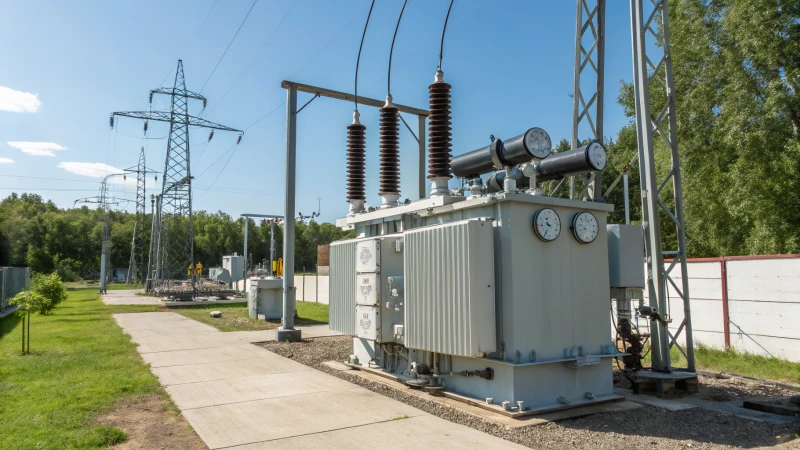
Selecting the right transformer is a critical engineering decision that ensures a reliable, efficient, and safe power system. The process must align the load requirements with the transformer's permissible current capacity, factoring in operational conditions, future growth, and safety margins. A poorly selected transformer can lead to overloading, frequent failures, energy inefficiency, and high maintenance costs.
In this article, we’ll walk through the practical steps for selecting a transformer based on load demands and permissible current, ensuring an optimal match between your electrical needs and transformer capabilities.
1. Accurately Determine the Load Requirements
The first step in transformer selection is to understand the total electrical load the transformer will serve.
- Real Power (kW): The actual useful power consumed by the load.
- Apparent Power (kVA): The total power, including real and reactive components.
- Power Factor (PF): The ratio of real power to apparent power, typically between 0.8 and 1.0.
Calculate Apparent Power (kVA):
[\text{Apparent Power (kVA)} = \frac{\text{Real Power (kW)}}{\text{Power Factor (PF)}}]
For example, a 400 kW load with a 0.9 power factor requires:
[\text{Apparent Power} = \frac{400}{0.9} = 444.44\ \text{kVA}]
Always base transformer selection on apparent power (kVA), not just real power (kW).
2. Consider Future Load Expansion
A good practice is to factor in a future growth margin, typically 20–30%, to account for additional load without needing an early transformer upgrade.
[\text{Required Transformer Size} = \text{Calculated kVA} \times 1.2\ (\text{for 20% margin})]
Using the earlier example:
[444.44\ \text{kVA} \times 1.2 = 533.33\ \text{kVA}]
Thus, select a standard 630 kVA transformer (rounded to the next available size).
3. Match Rated Current to Load Current
Once kVA is determined, calculate the load current:
[\text{Load Current (I)} = \frac{\text{Apparent Power (VA)}}{\sqrt{3} \times \text{Voltage (V)}}]
For a 630 kVA, 400 V transformer:
[\text{Load Current} = \frac{630,000}{\sqrt{3} \times 400} ≈ 908\ \text{Amperes}]
Ensure the transformer's permissible current rating exceeds the maximum expected load current under standard operating conditions.
4. Check Ambient Temperature and Apply Corrections
If the transformer will operate in an ambient temperature higher than standard (typically 30 °C for oil-filled transformers):
- Apply derating factors from standards like IEC 60076-7 or IEEE C57.91.
- For 45 °C ambient, a 10% derating might apply:
[\text{Effective Capacity} = 630\ \text{kVA} \times 0.9 = 567\ \text{kVA}]
Select a larger transformer if necessary to maintain the required capacity after derating.
5. Select Appropriate Cooling and Insulation Classes
Cooling methods and insulation types directly influence permissible current.
| Cooling Method | Typical Application |
|---|---|
| ONAN (Oil Natural Air Natural) | Standard installations. |
| ONAF (Oil Natural Air Forced) | Higher loads, better cooling needed. |
| Dry-Type (Air cooled) | Indoor or environmentally sensitive locations. |
| Insulation Class | Max Hot-Spot Temp (°C) |
|---|---|
| Class A | 105 |
| Class F | 155 |
| Class H | 180 |
Choose insulation and cooling based on expected loading patterns and environmental conditions.
6. Confirm Overload Capability and Permissible Overcurrent
Transformers are typically designed to handle temporary overloads without damage, following standard guidelines:
| Duration | Permissible Overload |
|---|---|
| 30 minutes | 150% of rated current |
| 2 hours | 120% of rated current |
| 24 hours | 110% of rated current |
Review transformer manufacturer specifications to ensure overload capabilities meet operational needs, especially for industrial loads with peak demand cycles.
7. Verify Regulatory Compliance
Ensure the selected transformer complies with relevant standards:
- IEC 60076 for international applications.
- IEEE C57.12 and IEEE C57.91 for North American systems.
- NEC/CEC (Electrical Codes) for proper installation, grounding, and protection.
This ensures legal operation, system safety, and insurance eligibility.
ClaimReview Fact Check
Transformer selection must align the load requirements with permissible current ratings, factoring in safety margins and environmental conditions.True
Selecting a transformer based on accurate load calculation, future expansion, cooling type, and standard permissible current ratings ensures safe and reliable operation.
8. Practical Transformer Selection Flowchart
| Step | Action |
|---|---|
| Step 1 | Calculate present load (kW and kVA). |
| Step 2 | Add a future expansion margin (20–30%). |
| Step 3 | Calculate expected load current (Amps). |
| Step 4 | Adjust for ambient temperature and derate if necessary. |
| Step 5 | Choose cooling method and insulation class. |
| Step 6 | Confirm overload capability from specs. |
| Step 7 | Ensure compliance with IEC/IEEE/NEC codes. |
| Step 8 | Final transformer selection and verification. |
Following this systematic approach guarantees an efficient, safe, and future-proof transformer installation.
Conclusion
Understanding and adhering to the permissible current limits of a transformer is essential for ensuring safe, efficient, and long-lasting operation. By recognizing the factors that determine permissible current—such as design materials, operating conditions, and temperature management—operators can select appropriate transformers for their systems and prevent damage caused by overloading. Compliance with industry standards further ensures that transformers operate within safe limits, protecting both the equipment and the broader power system. Proper planning around permissible current not only improves system reliability but also optimizes the transformer’s performance across its operational lifetime.
FAQ
Q1: What is the permissible current in transformers?
A1: The permissible current in transformers refers to the maximum continuous current that the transformer can carry safely without exceeding its designed temperature limits or causing damage to its insulation, windings, or core. It ensures reliable operation under specified load conditions.
Q2: Why is permissible current important for transformer operation?
A2: Permissible current is crucial because exceeding it can cause overheating, accelerate insulation degradation, increase energy losses, and ultimately lead to transformer failure. Operating within permissible current limits ensures efficiency, safety, and longevity of the transformer.
Q3: How is permissible current determined for a transformer?
A3: Permissible current is determined based on the transformer's rated voltage, rated capacity (kVA or MVA), cooling method, insulation class, and ambient temperature. It is usually specified by the manufacturer and conforms to international standards like IEC or IEEE guidelines.
Q4: What happens if a transformer operates above its permissible current?
A4: If a transformer operates above its permissible current, it may experience excessive heating, which can lead to insulation breakdown, reduced mechanical strength, deformation of windings, increased maintenance costs, and eventual catastrophic failure of the transformer.
Q5: How can transformers be protected from exceeding permissible current limits?
A5: Transformers can be protected using overload protection devices such as current transformers (CTs) with protective relays, thermal sensors, and automatic circuit breakers. These devices monitor current flow and disconnect the transformer when unsafe current levels are detected.
References
"Understanding Permissible Current Limits in Transformers" - https://www.transformertech.com/permissible-current - Transformer Tech
"Transformer Current Ratings and Safety Standards" - https://www.powermag.com/transformer-current-rating - Power Magazine
"How to Calculate Permissible Current for Transformers" - https://www.electrical4u.com/transformer-permissible-current - Electrical4U
"Impact of Overcurrent on Transformer Performance" - https://www.researchgate.net/transformer-overcurrent-impact - ResearchGate
"Designing Transformers for Current Handling and Safety" - https://www.sciencedirect.com/transformer-current-handling - ScienceDirect
"Monitoring and Managing Transformer Current Levels" - https://www.smartgridnews.com/transformer-current-management - Smart Grid News
"Transformer Failure Prevention Through Current Control" - https://www.energycentral.com/c/ee/transformer-current-control - Energy Central
"Why Monitoring Permissible Current is Key to Transformer Health" - https://www.powergrid.com/transformer-current-monitoring - PowerGrid


